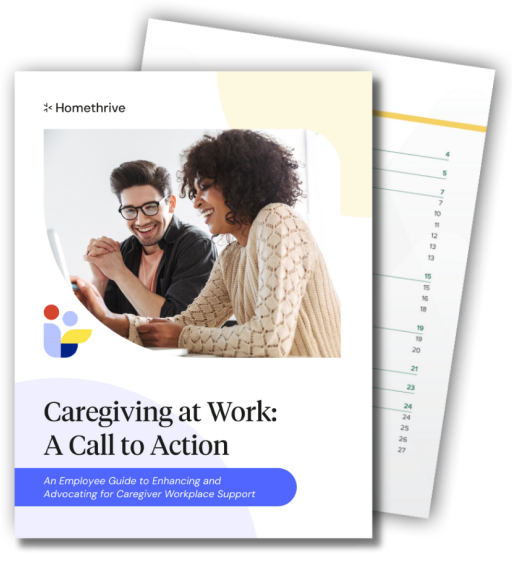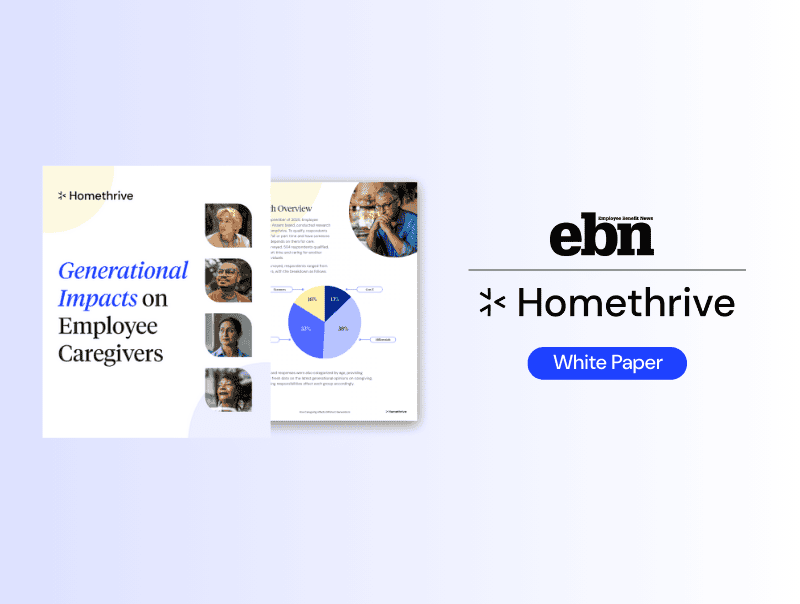Look up the term “glass ceiling” nowadays and you will find a plethora of articles about how women are smashing it across the board, climbing to new heights in areas that for many years were occupied solely by men. Even on the caregiving front, the gaps are seemingly shrinking, with men year over year taking on more of the at-home responsibilities like caregiving, childcare, and housework.
However, the biases that plague our perceptions of what makes a “good worker” and how we support them through their own life changes continue to haunt us through these encouraging developments. In law firms especially, we see these same old glass ceiling issues rear their heads, as the number of women entering the profession do not match up with the number that eventually rise to leadership positions.
By understanding the barriers for women in law, employers can avoid the consequences that so often accompany unsupportive work environments, and set their firms up for success in the long run.
Gender Imbalances in Top Roles vs. At Home
The number of women choosing to study law has been steadily increasing for a number of years now, and in 2016 women outnumbered their male peers in law schools for the first time. That stat continued to be true for the next eight years, and in 2023 data from the American Bar Association indicated that 56.25% of law students were women, compared to 42.85% men. This same report also indicated that 18 out of 20 of the top law schools had higher female than male student enrollment.
Despite the number of women attending top schools, these same numbers have yet to be reflected in leadership roles that offer more compensation and prestige for attorneys.
At the same time, the likelihood that women will be delegated the “office housework” over the “glamour work” is a well-known issue both within the legal profession and outside of it.
Office housework refers to the day-to-day work that needs to be done, but does not come with any career credit that may contribute towards advancement or compensation. These include tasks like coordinating in-office events, taking notes, or leading ERGs or diversity groups that require a significant investment of time with no billable hours to show for it.
Litigators especially may find themselves in this frustrating position, with women continuing to be underrepresented in the courtroom. In addition, according to NALP’s Report on Diversity in U.S. Law Firms, “women now account for 49.4% of all associates at law firms, but only 32.7% of non-equity partners and 22.6% of equity partners.”
The Imbalance of Housework and Caregiving
It is important to note that the lack of women in the courtroom and at the highest levels of leadership is not due to a lack of talent or ambition, but to a number of factors that press in from all sides of an attorney’s life and career.
The fork in the road truly appears when it comes down to family planning and having children, the consequences of which women are all too familiar with. According to numbers presented by ABA and Harvard, the breakdown of housework and at-home responsibilities are as follows:
| Responsibility | Mothers | Fathers |
| Arranging child care | 65% | 7% |
| Leaving work early to attend to children | 47% | 17% |
| Scheduling doctor’s appointments | 71% | 9% |
| Helping with homework | 41% | 12% |
| Cooking meals | 41% | 16% |
In addition, single mothers have even more disadvantages to contend with than their peers, a fact that remains true across sectors.
Motherhood and Caregiving: Perceptions and Consequences
Besides the discrepancy between the levels of housework done by men and women, there is also the issue of negative or false perceptions of motherhood.
With motherhood often comes the assumption that you are also less committed to your job, less willing to travel, and less willing to make sacrifices for your career, even if there are no true results to indicate these assumptions are correct.
Maternal Wall
Regardless of how much time they dedicate to their children, women are oftentimes questioned–either for spending too much time with their children, or not enough.
Too much time with children means not enough time dedicated to the job, but too little time and a woman is branded an absentee parent that should be with their children, rather than spending more time at work. This bias is called the “maternal wall,” and leads to co-workers, or fellow attorneys, stereotyping them and their commitment to both their family and career. Women may run into the maternal wall even before their children are born, when they first announce their pregnancy.
Motherhood Penalty
In a similar vein, the more well-known “motherhood penalty” ties these harmful biases to paychecks and advancement opportunities. With the addition of each new child, and subsequently the increase in maternity leave and caregiving responsibilities, women have historically suffered a pay cut. Conversely, men often find themselves in the opposite situation, with a “fatherhood bonus” that raises their compensation.
With the need for billable hours, attorneys aren’t exempt from these barriers. The maternal wall and motherhood penalties are pervasive across industries, and the biases that clients already have based on their own organizations and experiences may result in pursuing a man in favor of a woman as their representation.
In addition, mothers may not be offered the same opportunities within firms as their counterparts, a delay in advancement that may follow them throughout their careers and into their 50s. This gap in opportunity and pay especially affects attorneys that are women of color, who oftentimes are both the breadwinner and the primary caregiver for their families.
Discrimination and Disparaging Comments
False perceptions about motherhood are no secret–in fact, many mothers will receive these comments directly. According to ABA’s Legal Careers of Parents and Child Caregivers report, 61% of mothers in law firms “experienced demeaning comments about being a working parent.” This is compared to 26% of fathers.
Negative experiences like these can result in women feeling less included in the workplace culture, no matter how successful they are at their career or at motherhood.
Parenthood and the Consequences for Law Firms
In an ABA study done in 2019, results indicated that caregiving was the number one reason for women leaving their law firms. This turnover doesn’t just cost a firm money as they attempt to find a new attorney to fill the gap, it also disrupts existing client relationships, leading to a lapse in trust and organization.
If a firm doesn’t lose an attorney altogether, then chances are billable hours themselves will take a hit. Many caregiving responsibilities take place during working hours, and providing transportation, making calls to doctors and service providers, and general child care may result in lower productivity as an attorney-caregiver attempts to juggle everything.
Luckily, there are ways that law firms can reduce caregiver-related turnover and dips in productivity.
How Law Firms Can Change Old Standards
Become a more flexible workplace
Providing a flexible work environment is one of the easiest and most effective ways to support a working caregiver. By trusting attorneys to set the best hours and location for the type of work (and the type of caregiving) that they need, firms can increase overall satisfaction and work-life balance.
In the study by ABA, parents (both men and women) reported that hybrid or remote work decreased their levels of stress. Although introducing flex policies is an important step to supporting caregivers and parents in a firm, it must also be done in a way that combats some of the negative stereotypes associated with adjusting one’s schedule to match their needs. This can be accomplished by encouraging the use of flex time by everyone on the team, rather than a select few.
Implement caregiving and wellness benefits
Wellness benefits like Homethrive are proven to reduce stress and confusion for attorney-caregivers by providing digital and live support whenever they need it. The Care Team at Homethrive provides assistance that includes answering healthcare questions, navigating insurance questions, providing emotional support, scheduling appointments, and researching local services.
In one recent case study done with an international law firm, Homethrive found that they were able to save the firm over 2,300 billable hours by providing caregiving assistance. Using their caregiving benefit, caregivers across the firm were able to find new primary care providers, schedule doctor appointments, improve communication in their family, and locate and pay for services to help with chores at home.
Provide generous parental leave for both mothers and fathers
Ensuring that both parents are granted reasonable time off around the birth of a child is another way to encourage a balance when it comes to house and child work at home. While it may seem natural to extend parental leave to a mother, the fact remains that the amount of paternity leave also has long-lasting effects for the family and their well-being.
Paid paternity leave is associated with the following benefits:
- Greater involvement in child engagement and caregiving by the father
- Reduced risk of postpartum health conditions for the mother
- Reduced rate of child maltreatment
- Greater father-child bonding and communication
- Greater confidence for new fathers in their parenting
- A more stable relationship between mother and father
- Improved mental health for both parents
Overall, studies show “offering paid paternity leave has a profound impact on gender equality, both inside and outside the home.” Supporting paid paternity leave, therefore, becomes a direct way to combat the motherhood penalty.
Those with children, lead by example
One way to ensure that the maternal wall doesn’t interfere with the mothers that work for a firm is to lead by example. Utilizing time off, flexible policies, parental leave, wellness benefits, EAPs, or ERGs is a way for leadership to not only improve their own wellbeing and work-life balance, but also a great way to demonstrate that support systems work, and no one will be judged for using them when they need.
There are several ways that law firms can adjust their culture to meet the needs of the caregivers on their team. While the discrepancies are perhaps most noticeable when it comes to the gender divide, the fact of the matter is that the role of caregiver can affect anyone at any time.
Whether an attorney is expecting a new child, is taking care of an injured partner, or is watching out for a recently diagnosed parent, episodes of care come and go as time marches on, and having strategies in place to smooth these life changes can mean the difference between keeping your attorneys, and losing them to overwhelming responsibilities at home.
By partnering with Homethrive, you can help employees reclaim valuable time and energy to focus on their work, families, and personal well-being.
Show your team they don’t have to choose between their careers and caregiving responsibilities. Contact us today to explore how Homethrive can enhance your employees’ well-being and productivity.







